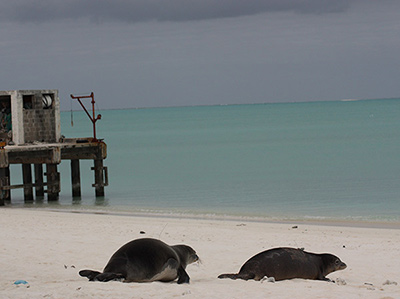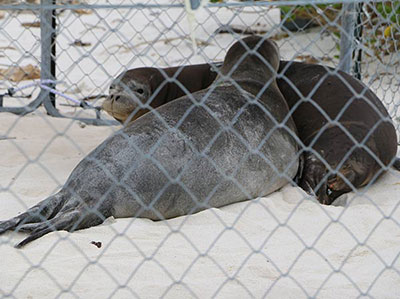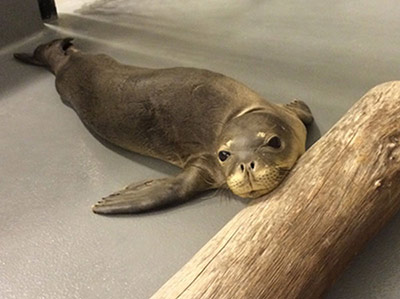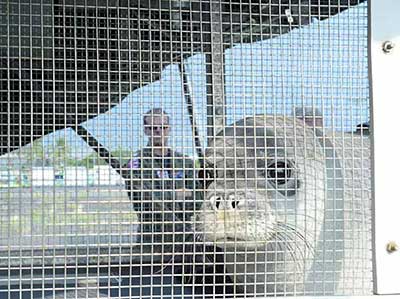Hawaiian Monk Seals Return Home
On March 25, two Hawaiian monk seals were returned to Papahānaumokuākea Marine National Monument after being rehabilitated at The Marine Mammal Center's Ke Kai Ola Hawaiian Monk Seal Hospital in Kona. The seals were rescued last year in an emaciated state, one from Kure Atoll and another from Laysan Island, during NOAA Fisheries Hawaiian Monk Seal Research Program's field camp season.
The two juvenile females, Pua ʻEna O Ke Kai ("fiery child of the sea") and Meleana ("continuous song"), or Pua and Mele for short, were transported last September aboard NOAA Ship Oscar Elton Sette to the Ke Kai Ola hospital in Kona, where staff and volunteers with the Center spent five months nursing the animals from their malnourished state to the fat healthy seals they are now. Last year, four other young seals from the Northwestern Hawaiian Islands were rehabilitated at the newly-opened center, and were returned to French Frigate Shoals and Laysan Island last September.
A U.S. Coast Guard HC-130 aircraft crew from Air Station Barbers Point on Oʻahu picked up the seals in Kona and flew them to Midway Atoll National Wildlife Refuge on March 18. The seals were then transported by the supply ship Kahana to Kure Atoll State Wildlife Sanctuary, located at the northernmost point in the Hawaiian archipelago, about 1,350 miles northwest of Honolulu.
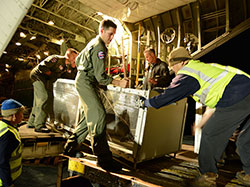
U.S. Coast Guard crew members load the seals onto the HC-130 for transport. Credit: Petty Officer 2nd Class Tara Molle/U.S. Coast Guard, NMFS permit #932-1905-01/ma-009526-1
The Hawaiian monk seal is critically endangered, with fewer than 1,100 individuals in the wild, including about 900 in the Northwestern Hawaiian Islands. Fewer than one in five Hawaiian monk seal pups in the Northwestern Hawaiian Islands survive their first year due to threats including starvation, entanglement in marine debris, and male aggression due to abnormally small population size. NOAA Fisheries implements numerous strategies to combat these threats; their monk seal recovery program is the most proactive marine mammal conservation initiative in the world. At least 30 percent of the Hawaiian monk seal population is alive today because of the collaborative efforts to help save them.
Hawaiian monk seals transported from the Northwestern Hawaiian Islands to the Kona facility for rehabilitation may only be released back to the NWHI. Release at Kure Atoll is favorable given its recent good survival rates for young seals and opportunities for weekly visual surveys by DLNR staff stationed there. Seal movements will also be tracked via satellite for post-release monitoring.
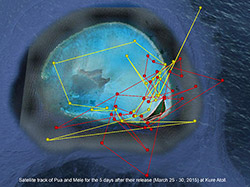
Satellite track of Pua and Mele for the 5 days after their release (March 25-30, 2015) at Kure Atoll. Pua and Mele are exploring their new environment and behaving normally. Credit: NOAA, NMFS permit #932-1905-01/ma-009526-1
Read the Press Release.
See more pictures and videos.
